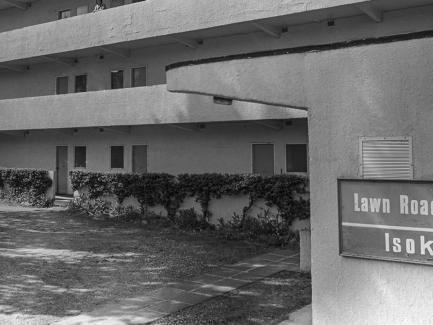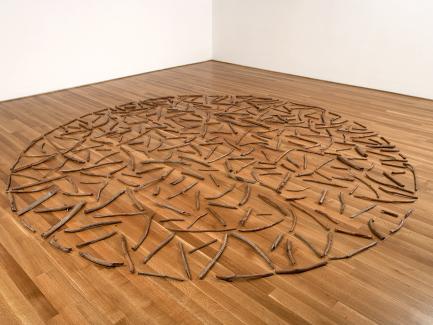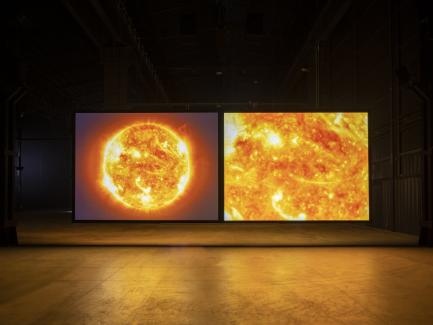The symposium schedule and speaker biographies and abstracts are available for download here.
A pioneer in its approach to materials, marketing, and design, Isokon Ltd was instrumental in introducing functional modernism to England between the wars. Established in 1932 by the progressive entrepreneur Jack Pritchard (1899–1992), it became known for the sleek, ocean-liner-inspired apartment building on Lawn Road in London, designed by Wells Coates (1895–1958) in 1934, and the iconic collection of bent-plywood furniture, much of it designed by Marcel Breuer (1902–1981). Together these endeavors gave form to a radical new way of living and have inspired generations of designers since.
The story of Isokon is the story of multiculturalism and creative exchange among a vibrant, if intimate, modernist milieu in 1930s London. The striking Lawn Road building, nestled in the historic area of Hampstead, was at the epicenter of the avant-garde community and attracted progressive artists, architects, and writers sympathetic to the model of efficient, collective living it exemplified. Among its residents were Bauhaus masters Breuer, Walter Gropius (1883–1969), and László Moholy-Nagy (1895–1946), who fled Nazi Germany with Pritchard's assistance and subsequently became the backbone of the Isokon design team.
The small but significant range of furniture produced by Isokon in the 1930s marked a new direction for modernist design that combined the sleek machine aesthetic of the Bauhaus with an organicism particular to British modernism. Made using affordable materials and novel modes of production, this collection embedded Isokon in avant-garde discourse about revolutionary design and its impact on social life.
This online symposium will explore Isokon within the systems of manufacturing, media, and collective living that underpinned modernist practice in the 1930s and consider its global legacy.
A recording of this program will be made available online. Please check back here soon.
Isokon Symposium Program
All times are Eastern Daylight Time.
Thursday, April 20
1–2 pm
Juliet Kinchin, independent design historian
Magnus Englund, Isokon Gallery Trust
Leyla Daybelge, Isokon Gallery Trust
To join us for the keynote conversation, please register here.
Friday, April 21
Introduction
8:30–8:45 am
An Isokon Exhibition at the Yale Center for British Art
Rachel Stratton, Yale Center for British Art
8:45–9:25 am
Researching Isokon—Past, Present, Future
Christopher Wilk, Victoria & Albert Museum
Panel 1: The Lawn Road Flats: Before and After
Chair: Alexandra Lange, critic
9:25–9:30 am
Introduction
9:30–9:50 am
Isokon in the Antipodes: Best Overend and the “Cairo” Flats
Philip Goad, University of Melbourne
9:50–10:10 am
Before Lawn Road
Elizabeth Darling, Oxford Brookes University
10:10–10:30 am
Roundtable discussion
10:30–10:40 am
Break
Panel 2: The Making and Marketing of Isokon Furniture
Chair: Eeva-Liisa Pelkonen, Yale School of Architecture
10:40–10:45 am
Introduction
10:45–11:05 am
Isokon: Prototypes for Cooperation
Jyri Kermik, Estonian Academy of Arts
11:05–11:25 am
Isokon and the Architectural Review: Advertising Modernism to the British Middle Class
Jessica Kelly, London Metropolitan University
11:25–11:45 am
Roundtable discussion
11:45 am – 12:15 pm
Break
Panel 3: The Social Life of Isokon
Chair: Craig Buckley, Yale School of Architecture and History of Art Department
12:15–12:20 pm
Introduction
12:20–12:40 pm
The Isobar Club and Avant-gardes in London in the 1930s
Caterina Caputo, Università degli Studi dell'Aquila
12.40–1:00 pm
Dwellings of the World Unite! A Comparison of the Lawn Road Flats and Narkomfin, the Convergent Evolution of “Communal Living” in the Interwar Period
Calvin Po, Dark Matter Labs
1:00–1:20 pm
“Dwelling Minimally”: Walter Gropius, Marcel Breuer, and László Moholy-Nagy at Isokon in England
Robin Schuldenfrei, Courtauld Institute of Art
1:20–1:45 pm
Roundtable Discussion


